Browse Exhibits (120 total)
Alan Lewis Collection
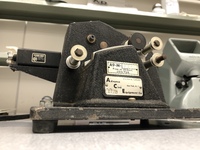
The Alan Lewis Collection, donated in 2017, is comprised of nearly two hundred small gauge movie cameras and fifty projectors, film editing and viewing equipment, along with many of their original cases, sales boxes, instruction manuals, and accessories. The diverse collection represents a unique selection of moving image technologies produced from the 1920s through the 1980s, showcasing a diversity of film gauges and formats - from regular 8mm, double 8mm, and 16mm on spools or in magazines to super 8mm cartridges.
Alan Lewis, a moving image archivist most recently for the National Archives in Washington D.C., worked for the Public Television Library (PTL) of PBS right here in Bloomington, IN between 1973-74. PTL worked closely with the Indiana University Audio-Visual Center (IUAVC), a precursor to the IU Libraries Moving Image Archive (IULMIA), and WTIU Public Television to acquire nonlocal TV programs for national distribution. Later in his career, while working for the Motion Picture, Sound, and Video Branch of the National Archives, Alan began collecting the very technologies that created the moving images he oversaw during his career.
Overall, the collection reveals the stylistic evolution and vast diversity of amateur moviemaking equipment, as well as its beauty. From the extravagant ostrich leather casing of the 16mm Ciné-Kodak Model B to the industrial portability of the 8mm Revere Series exists the aesthetic blending of art and utility. As a testament to the craftsmanship of the collection objects, many cameras and projectors are still in working order! A selection of camera motor function recordings can be heard in the exhibit's Audio Archive.
The collection represents an important form of moving image history and technology outside of commercial Hollywood production. These are the objects that captured and shared the everyday, the familial, the nontheatrical, and so much more. A few of the cameras even hold film from their last cinematic adventures, patiently guarding their visual memories with stoic resolve until they might one day reveal their truths to the world.
Choose a motion picture brand below to view an image gallery of select collection objects. Owner's manuals, advertisements, and promotional materials are included with select objects when available. Some galleries include an audio recording of camera motor function when in working order. These cameras are marked with an * for easy identification and an audio archive with all camera recordings is provided at the bottom of the brand list for convenience.
People are Taught to be Different
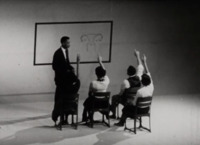
12 programs, 1958, KUHT (Houston)
This groundbreaking series uses an all-black cast from the University of Houston to illustrate sociological concepts via dance.
From WNET:
"People are Taught to be Different is a series of films representing a new departure in educational telecasting. From anthropology, social psychology and sociology, it draws case materials that dramatically portray the different ways children are brought up and personality is shaped throughout the world. Against a stylized background of primitive village and modern American life, folkways of childbirth, child-rearing, puberty rituals, courtship behavior, marriage rituals, institutional development, religion, medicine and death rituals are interpreted through the medium of modern dance. The sets, dances and music, create specifically to complement the explanations of the various groups and topics, combine to give, the viewer a “you are there” perspective. The material is presented by Dr. Henry Allen Bullock, professor of sociology and Chairman of the Graduate Research at Texas Southern University. He explains how and why human beings are made into different kinds of persons in different parts of the world."
Community of the Condemned
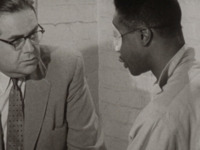
26 programs, 1958, WTTW (Chicago)
From WNET:
“Community of the Condemned brings to the public a searching study of penal institutions and correctional systems and their inmates, indicating the damage done by outmoded penal practices which follow upon lack of understanding, inadequate information and public apathy. In each case, nationally-known criminologist Joseph D. Lohman discusses the problem with a group of guest experts. On-location filmed prison scenes and direct interviews with actual prison inmates are seen. Various differences in prisoners are investigated along with the multiple kinds of institutions, often too all-equipped to allow beneficial results. The dramatic need for new procedures, new kinds of institutions and correctional programs, and professional, well-trained staffs to administer them is indicated during the series."
Japan: Changing Years
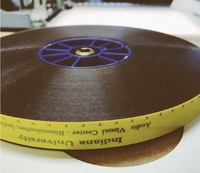
10 episodes, 1961, University of Michigan
From WNET:
"In 1941 Japan was our enemy. By 1951 she had become a staunch ally. Between 1861 and 1961 she made the leap from a Middle Ages culture to a modern one – a transformation that took most European countries four centuries to accomplish. Neither change occurred without tremendous political and social upheavals and enormous tensions and conflicts between the old and the new. In Japan: The Changing Years, these major changes and the resulting tensions are examined by experts who combine academic stature with first-hand knowledge of the country and the conditions they discuss. Films are used extensively to illustrate the points under consideration. These include historic footage shot in 1906 as well as a considerable amount of captured World War II film obtained from the U.S. Army or from the National Archives. Through the cooperation of the Japan Society, Inc., of New York (which shared the cost of producing the series with NETRC) antique prints and paintings and nineteen century photographs were obtained for use. Other still photographs were taken from the book We Japanese, published b Heibonsha of Tokyo. Much of the music was taken from Japanese radio broadcast tapes cleared for use by the Japan Society."
The arts around us

13 episodes, 1957, WOR-TV
From WNET:
"Man’s creative activities and their interrelationships are explored in this 13 program series. Produced by Hofstra College, the series features Dr. Malcolm H. Preston, chairman of the Fine Arts Department at Hofstra and an artist in his own right. Dr. Preston illustrates techniques and principles at the easel and also employs, for illustrative purposes, originals, prints, models and photographs of selected art works. Artwork for the series was loaned by the Museum of Modern Art, Metropolitan Museum and Alan Galleries of New York. The series concentrates on painting as an art but also touches on literature, architecture, sculpture, music and drama."
Alaska: The New Frontier
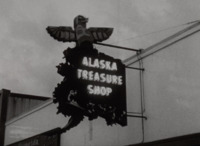
6 programs, 1961, KCTA-TV
From WNET:
"Alaska became the forty-ninth state in 1958; ninety-one years after Secretary of State William H. Seward negotiated the purchase of the territory from the Russians. In many ways it has changed radically since 1867, and since 1958; in others, it remains as it was centuries ago. To explore the many faces and facets of the largest and second newest state, KCTA-TV of St. Paul, Minnesota, sent a film crew to Alaska to prepare this series. They and their cameras traveled from modern Anchorage to Point Hope, one of the oldest Eskimo villages in the state; they visited abandoned gold mines, Armey missile sites, the governor’s office, the new settlements of homesteaders, the factories and the farms that combine to make Alaska a state of excitement and vigorous activity. The result is a series that portrays the state with the immediacy that can be achieved only by a blending of fine visual material and informed commentary."
American Art Today

13 episodes, 1956, Hofstra College in cooperation with WOR-TV
From WNET:
"This sequel to “The Arts Around Us” will deal with modern American art in all its diversity – concentrating on such broad areas as expressionism, realism, classicism, influence of science, and sources of 20th Century American Art. Dr. Malcolm Preston, chairman of the Hofstra College department of art, is the featured narrator and demonstrates many of his lecture points at the easel during these thirteen half-hour programs. He uses many originals and prints from contemporary American painters as visual aids and a number of internationally known American artists will appear as guests on the program. American Art Today was produced for the Center by Hofstra College in cooperation with WOR-TV."
Patterns of Life
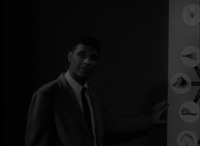
13 episodes, 1960, University of Southern California
From WNET:
"'Patterns of life' has as its theme an explanation of the chemical bases of life, which remain constant whatever form the life itself may take. In its most simple and its most complicated forms, living matter is always based upon the same elementary chemical and physical reactions, explains Dr. Saltman: it is the purpose of this series to describe those reactions, how that are produced, and what substances go into the construction of cells and enzymes, vitamins and viruses – the elements of life. Using visual aids such as scale models, diagrams, and even rare views through electronic microscope, Dr. Saltman analyzes in layman’s terms the complicated and fascinating chemical systems which weave together into the “Patterns of Life.” The series was produced for NET by the Department of Cinema of the University of Southern California. The series consists solely of lectures and demonstrations by Dr. Saltman."
The Quill

13 episodes, 1955, WQED (Pittsburgh)
From WNET:
"'The Quill' is a course in writing that is basic enough to be of value to the businessman, the housewife, the engineer, or the beginning poet, novelist or short story writer. The course deals first with simple style, particularly as it applies to the selection of words; secondly, with the construction of sentences that are clear and powerful; and third, with the organization of paragraphs that are pleasant and persuasive. Throughout, the course suggests that the study of the art and craft of writing increases our pleasure in good thinking and in good reading."
Portraits in print
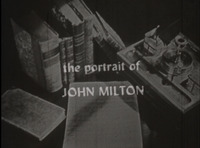
10 episodes, 1960, WHYY (Philadelphia)
From WNET:
"Each program presents the life of a famous author as it was reflected in his own writing. A series of drawings, etchings, lithographs, and photographs of the times and places mentioned recreates the times and physical appearance of each writer. A narrator describes these times and places, often from the authors’ works. In addition, actors on camera read well-known passages. The programs were prepared in cooperation with the Free Library of Philadelphia."

